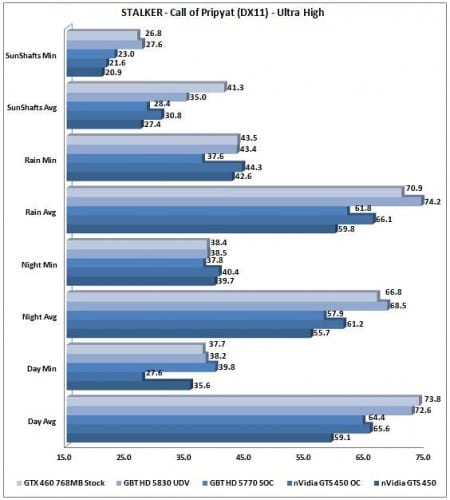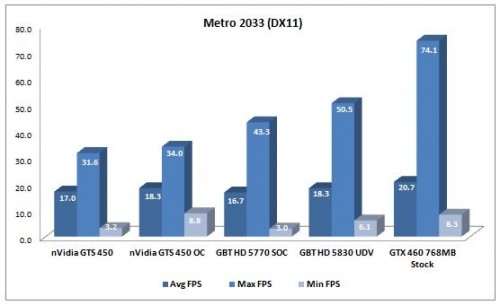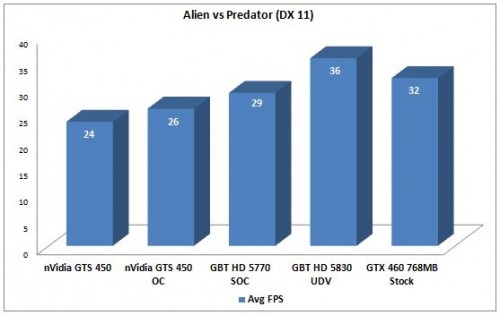STALKER – Call of Pipryat (DX11)
Like Crysis, this game represents one of the most punishing tests a GPU can go through. We refrained from hitting the EXTREME setting and just settled for Ultra High while running the gamut of tests and we got playable averages for all the GPUs. The GTS 450 overclocked beats an already factory overclocked HD 5770 in this particular game.
Metro 2033 (DX11)
One of our newer benchmarks and a very demanding one at that. They’ve recently included a built in benchmarking tool in the latest update so we’ve finally been able to add this to our benchmarks. It’s also a PhysX enabled title allowing us to torture the cards a little more.
Unfortunately, the overhead is too much and none of the cards gives us a playable frame rate with PhysX enabled and the GTS 450 just barely edges out the HD 5770. This is easy enough to fix with the nVidia card: just add another GPU and assign it as the PhysX processor. ATI/AMD? No can do.
Alien Vs Predator (DX11)
Alien vs Predator or AvP is another benchmark that is based on DX11. While it is an older title, it still gives a GPU a good pounding. Average frame rates favour the AMD/ATI cards. The HD 5770 beats the GTS 450 in this round.
Battleforge (DX11)
Battleforge is another great RTS benchmark that’s free to play and is put out by EA. It uses DX11 and looks really great and is fun to play when you get sick of Zergs, Protoss and Humans. The benchmark gives us an absolute worst case scenario with some crazy amounts of characters on the map. As you can see, it definitely stutters a bit with some very low minimum frame rates, but all cards produce playable averages with AA off or on. HD 5770 takes it in this round against the GTS 450.
This ends our game benchmarks. Next we’ll be looking at things like power consumption, noise levels and a new test that is pretty much nVidia GPU specific and is based on how it handles Adobe Premiere Pro CS5!




